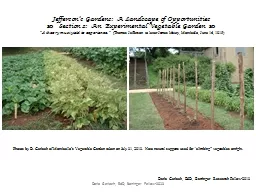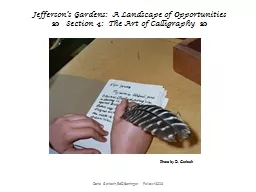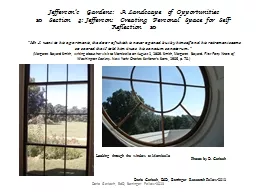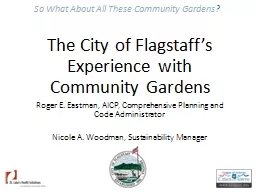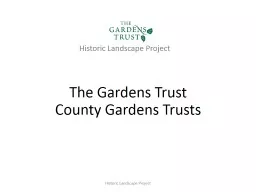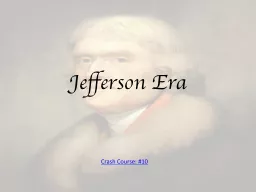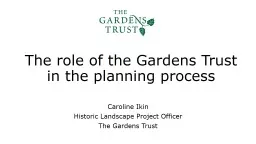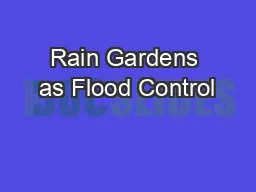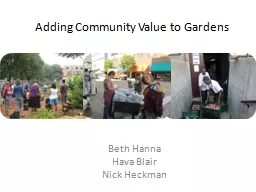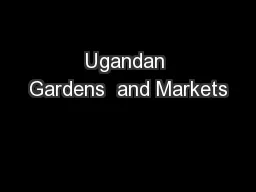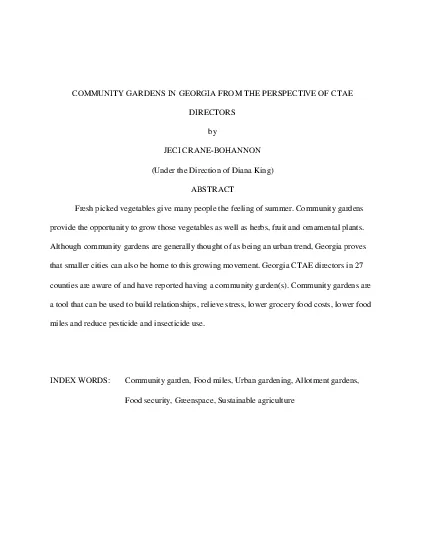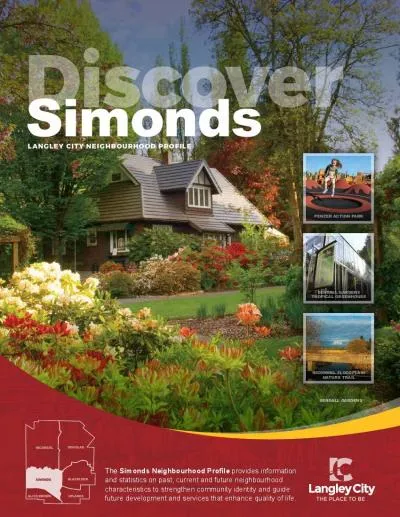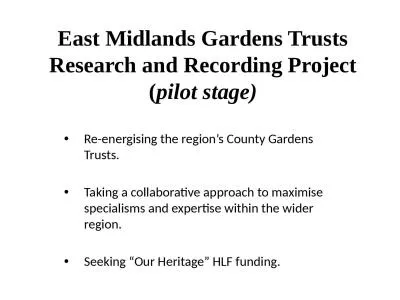PPT-Jefferson’s Gardens: A Landscape of Opportunities
Author : debby-jeon | Published Date : 2018-10-27
c Section 2 An Experimental Vegetable Garden c A theory must yield to experience Thomas Jefferson to letter James Maury Monticello June 16 1815 Photos by
Presentation Embed Code
Download Presentation
Download Presentation The PPT/PDF document "Jefferson’s Gardens: A Landscape of ..." is the property of its rightful owner. Permission is granted to download and print the materials on this website for personal, non-commercial use only, and to display it on your personal computer provided you do not modify the materials and that you retain all copyright notices contained in the materials. By downloading content from our website, you accept the terms of this agreement.
Jefferson’s Gardens: A Landscape of Opportunities: Transcript
Download Rules Of Document
"Jefferson’s Gardens: A Landscape of Opportunities"The content belongs to its owner. You may download and print it for personal use, without modification, and keep all copyright notices. By downloading, you agree to these terms.
Related Documents

